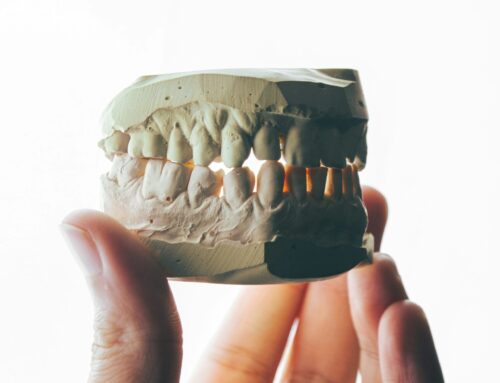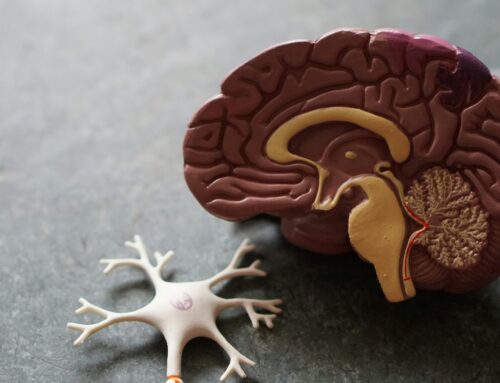Stress Headaches
Stress headaches, also known as tension headaches, are a common type of headache triggered by physical and emotional stress factors. They usually manifest as a dull, pressing pain and often affect both sides of the head. Physiotherapy has established itself as an effective method for treating and preventing stress headaches.
Stress headaches arise from muscle tension and increased sensitivity in the brain’s pain center. Stress, both physical and emotional, leads to increased muscle tension, especially in the neck, shoulder, and head area. These tensions can impair blood circulation and increase pain sensitivity.
Causes
Stress headaches, also known as tension headaches, are one of the most common forms of headaches. They result from various factors that strain the muscles of the head and neck. This type of headache can be episodic or chronic. The exact pathophysiology is not yet fully understood, but it is believed that increased muscle tension and changes in pain processing in the central nervous system play a central role.
Prevalence
Tension headaches are widespread globally and affect people of all age groups. Estimates suggest that about 30-78% of the population experience this form of headache at least once in their lifetime. Chronic tension headaches, defined as headaches occurring on more than 15 days per month for at least three months, affect about 1-3% of the population.
Distribution
Tensionheadaches are somewhat more common in women than in men. They are prevalent across all age groups, with a slightly higher incidence in young adulthood. There are no significant geographical differences in the distribution of tension headaches, but cultural and socioeconomic factors can influence their perception and treatment.
Causes
The causes of tension headaches are multifactorial and include:
- Stress and Psychological Strain: Emotional tension and stress are common triggers.
- Muscle Tension: Prolonged or recurrent tension of the head and neck muscles.
- Postural Issues: Poor posture can lead to muscle tension and headaches.
- Sleep Disorders: Insufficient or disturbed sleep can contribute to tension headaches.
- Eye Strain: Long periods of computer work or reading without breaks can strain the eyes and cause headaches.
- Dental Problems: Teeth grinding (bruxism) can also play a role.
Symptoms
The symptoms of tension headaches can vary, but typically include:
- Pain Character: A pressing or tightening pain, often described as a tight band around the head.
- Location: Bilateral, often in the forehead, temples, or back of the head.
- Intensity: Mild to moderate, usually non-pulsating.
- Duration: Can last from 30 minutes to several days.
- Accompanying Symptoms: Usually no nausea or vomiting; sometimes slight sensitivity to light or noise.
Treatment and Prevention
The treatment of tension headaches includes both pharmacological and non-pharmacological approaches:
- Pharmacological Therapy: Pain relievers such as paracetamol or ibuprofen can provide short-term relief. In chronic cases, tricyclic antidepressants may be prescribed.
- Non-Pharmacological Therapy: Relaxation techniques, biofeedback, physiotherapy, and psychotherapeutic approaches such as cognitive-behavioral therapy.
- Prevention: Regular exercise, stress management strategies, ergonomic adjustments at the workplace, and healthy sleep hygiene can help reduce the occurrence of tensionheadaches.
Physiotherapy for Stress Headaches
Diagnostic Approaches
An accurate diagnosis is the first step in the physiotherapeutic treatment of stress headaches. Physiotherapists conduct a detailed medical history and physical examination to identify muscle tension, postural issues, and other relevant factors. Imaging techniques such as X-rays or MRI are often used to rule out structural problems.
Treatment Strategies
The physiotherapeutic treatment of stress headaches includes various approaches aimed at relieving symptoms and addressing underlying causes:
- Manual Therapy: Targeted manipulations and mobilization techniques relieve tension and improve spinal mobility.
- Massage: Deep tissue massages can loosen muscle tightness and improve circulation, often providing immediate relief.
- Stretching and Strengthening Exercises: Customized exercises help strengthen muscles and prevent tension. Regular stretching can increase flexibility and prevent future discomfort.
- Relaxation Techniques: Breathing exercises, progressive muscle relaxation, and meditation are effective methods to reduce stress and relax the body.
- Ergonomic Advice: Improving ergonomic conditions at the workplace and in daily life can help avoid poor posture and muscle overload.
- Biofeedback: This method helps patients become aware of their muscle tension and learn techniques to reduce it.
Effectiveness of Physiotherapy
Various studies have demonstrated the effectiveness of physiotherapy in treating stressheadaches. A systematic review by Biondi (2005) showed that manual therapy and targeted exercises can achieve significant improvements in patients with tension headaches. Relaxation techniques have also proven effective in reducing the frequency and intensity of headaches.
Another important aspect is the long-term effect of physiotherapeutic treatment. By learning self-management techniques and performing regular exercises, patients can reduce their muscle tension and, consequently, the frequency of headaches in the long term.
Preventive Measures
In addition to acute treatment, physiotherapy also focuses on preventive measures. By identifying and modifying risk factors such as poor posture, ergonomic issues, and lack of physical activity, stress headaches can be prevented in the long term. Regular physiotherapeutic care and an active lifestyle are crucial in this regard.
Further Tips for Everyday Life
- Ergonomic Workspace: Proper sitting posture and a well-organized workspace help prevent and reduce muscle tension.
- Regular Breaks: Movement in regular intervals throughout the day relaxes tense muscles. Stretching helps keep muscles flexible and supple.
- Hydration: Adequate fluid intake prevents headaches and supports muscle and tissue health.
- Sleep Hygiene: A healthy sleep rhythm and ergonomic sleep position aid in headache prevention.
Conclusion
Physiotherapy plays a significant role in the treatment and prevention of stress headaches. Through a combination of manual therapy, targeted exercises, relaxation techniques, and ergonomic advice, symptoms can be effectively alleviated and the underlying causes addressed. Long-term improvements and a reduction in headache frequency are possible through the active involvement of patients in the therapy process. Future research should focus on optimizing treatment protocols and determining the most effective combinations of techniques to achieve the best possible outcomes for patients with stress headaches.







Leave A Comment